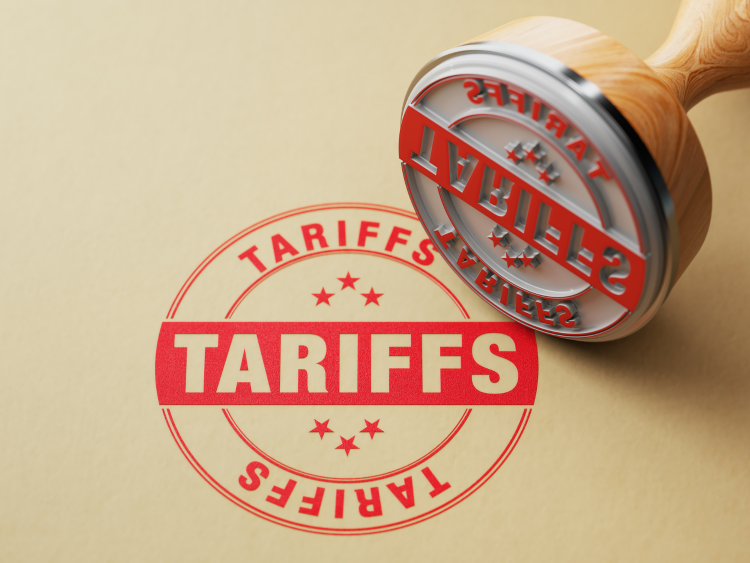Global Trade

September 16, 2025
Quarterly tariff cycle: Section 232 inclusions reopen... again
Written by Nicholas Bell
Just weeks after the Commerce Department implemented a new batch of Section 232 inclusions on aluminum-bearing goods by specific Harmonized Tariff Schedule (HTS) codes, the Bureau of Industry and Security (BIS) has opened another window for submissions.
The Sept. 15-29 window allows parties to request the addition of further aluminum (and steel) derivative products to the Section 232 tariff regime. (AMU has broken down what’s included so far here and here.)
For importers of aluminum-intensive parts and components, the pace of change underscores how tariffs, though still presented as a case-by-case process, have become part of a broader strategy of rolling expansion.
On Aug. 15, Commerce added over 200 HTS codes to the list of aluminum derivative products subject to Section 232 tariffs, effective Aug. 18. That followed the June 5 implementation of tariffs on more than 150 derivative categories and came alongside the increase in the base Section 232 tariff rate to 50% from 25% for primary and semi-fabricated aluminum. And that followed more than 100 HTS codes established as products taxable on their aluminum content in March, when the primary and semi-fabricate aluminum tariffs were lifted to 25% from 10%.
It’s not a novel observation to say that tariff policy has become convoluted and moved at a pace too rapid to avoid affecting market participants.
AMU’s August survey reflects how this is playing out in practice. Nearly half of respondents reported limited ability to pass tariff costs through to their customers. About 45% said they could only pass through half or less of the costs, up 15 basis points from 30% in July. Only a third said they were able to fully pass costs along, a decline that mirrors the month-to-month increase in those limited to partial pass-through.
Front-loaded fluctuations
A savings clause in the most recent derivative implementation in August created exemptions for goods shipped before Aug. 7 and entered before Oct. 5, which encouraged importers to front-load cargoes. This echoes behavior seen earlier in the year, when tariff hikes were announced for primary and semi-fabricated aluminum.
In fact, the front-loading of imports from previous derivatives and tariff implementation has occurred at highly suspect timing, never in the same quarter. There’s been, and potentially will be, implementation of a new round of tariffs (Section 232 tariffs alone) during one month of every quarter since the initial revamp of tariffs under the current administration: 2Q, 3Q, and possibly 4Q.
A front-loaded import surge can indirectly make a quarterly gross domestic product (GDP) look stronger based on how imports trickle down.
Auto case study: How tariffs register in GDP
The way front-loaded tariffs distort GDP and inflation data resembles what’s happened in the automotive market over the last couple of quarters. Nearly every tier of the automotive supply chain has noted a drop-off in demand. Yet, car brands have largely continued to post sales records to dealerships.
Tariffs on auto parts led to a front-loading of imports in the second quarter. That surge in auto parts entering the country let OEMs complete a greater share of vehicles that were waiting on a few components to complete assembly.
Notably, industrial production of durable goods manufacturing in the motor vehicles and parts sector surged to its highest level in over a year this May, following the automotive tariffs announcement at the end of March and the front-loading imports throughout April leading up to the May 3 implementation.
Even after the initial spike, monthly production levels remain higher than in prior-year periods, which could read as evidence of domestic output gaining ground on volumes once supplied by foreign exporters. In practice, though, plant closures, reduced shifts, weak operating results in quarterly earnings, and waning production disclosures from Tier-1 OEMs like Ford – despite its substantial U.S. manufacturing footprint – all point in the opposite direction.
For example, Ford’s year-to-date (January-August) production in the U.S. has actually softened by a little more than 1.5% year-over-year even as the company’s relatively limited output from abroad has shifted onshore. As a manufacturer with a large domestic base, Ford can avoid tariffs more easily than foreign automakers with limited U.S. (or even North American) capacity. Yet it remains one of the major producers these tariffs were ostensibly designed to support.
Nevertheless, the value added domestically (through margins, labor, etc.) to imported auto parts and automobiles naturally outpaced the net negative against the cost of importing in dollar terms. In turn, those finished assembles were then shipped to dealers, despite lagging retail sales to the end consumers.
This kind of increase in the value added to a car manufacturing in this example and the subsequent midstream sales it generates show up in GDP figures, likely a contributing factor to why Q2 GDP figures were at an all-time high and sector-specific, headline indicators in many cases appeared stable or even improving at first glance.
Costs of replacing front-loaded trade
Once the front-loaded inventory is drawn down, replacing it comes at a higher cost post-tariff. That pushes inflation higher but doesn’t bolster GDP again in the same way as the initial surge, when businesses stocked up ahead of deadlines.
At that stage, even domestic sourcing comes with elevated replacement costs, companies are going to start buying on “as-needed” bases.
This dynamic would make a case for the Federal Reserve to cut the federal funds rate, but it doesn’t help bolster the GDP again.
So long as new tariffs are rolled out across subsectors on a staggered basis, front-loading continues to lift reported GDP even as the delayed cost impact from earlier tariff rounds works its way through the supply chain.
The result is higher measured growth alongside upward pressure on inflation – an outcome that could, in theory, support arguments for interest rate cuts while still presenting headline economic strength.
Tariff strata and legal faults
To digress a bit, with each new round of coverage, questions emerge about how one tariff regime interacts with another. Rules on derivative, content-based Section 232 tariffs dictate that duties can overlap with other tariff schedules. In this case, steel and aluminum tariffs can both apply if the metals are present in the same product.
The April 29 executive order clarified when tariffs apply together and when one takes precedence. Section 232 tariffs – derivative, under separate executive orders, or otherwise – take precedence over tariffs like Section 301, the International Emergency Economy Powers Act (IEEPA) “reciprocal” tariffs, the “fentanyl” tariffs against Canada and Mexico.
However, in the case of automobile and auto parts imports, since they were a separate Section 232 action, those tariffs take priority above aluminum derivative Section 232 tariffs and any others. They are only applicable to the products covered under that directive.
That said, even as Section 232 is reinforced, other tariff authorities face challenges.
On Aug. 29, the Court of Appeals for the Federal Circuit affirmed the Court of International Trade’s (CIT) earlier ruling the “fentanyl” and reciprocal tariffs exceeded presidential authority under the IEEPA. The Court of International Trade previously determined that the executive orders were contrary to law and issued a permanent injunction, but the Federal Appeals court removed vacated the CIT’s injunction and subsequently stayed enforcement while the government appeals.
The Supreme Court will hear arguments in November.
While Section 232 remains active and is expanding through inclusions, IEEPA-based tariffs are vulnerable to judicial review. Because of the Apr. 29 order set the priorities for collection of Section 232 duties, the same HTS code can be listed under multiple regimes.
If IEEPA tariffs are struck down, Section 232 coverage can still apply. In that sense, the inclusions cycle provides a protectionist backstop, ensuring duties can still be levied even if other regimes are rescinded.
Tariffs as a permanent fixture
For aluminum buyers, the uncertainty is not only about the size of the tariff but about its durability. A product might face one tariff in August, another in October, or both at once if stacking rules apply.
As “mating season” unfolds just as these changes take effect, it makes it nearly impossible to lock in cost structures or commit to overseas suppliers. In niche, downstream markets where domestic capacity cannot meet demand, like the few markets left to put tariffs on the aluminum contained, the uncertainty leaves buyers with few reliable options.
Section 232 stands out as the only unquestioned tariff regime, doubling as both a (“artificial”) GDP booster in a weak economy and a level on inflation when pressure is sought on the Fed.
With the Section 232 inclusions process now in its third round, it has become clear that tariffs are likely not going away. The uncertainty itself is settling into a permanent feature of the trade environment.







